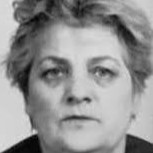
Stephanija Meyer
Summary
Name:
Nickname:
Lainz Angels of DeathYears Active:
1983 - 1989Status:
ReleasedClass:
Serial KillerVictims:
49+Method:
DrowningNationality:
Austria
Stephanija Meyer
Summary: Serial Killer
Name:
Stephanija MeyerNickname:
Lainz Angels of DeathStatus:
ReleasedVictims:
49+Method:
DrowningNationality:
AustriaYears Active:
1983 - 1989bio
Stephanija Meyer was 43 years old when she became involved in one of Austria’s most notorious killing sprees. Prior to her crimes, Meyer worked as a “house mother” at the Geriatriezentrum am Wienerwald in Lainz, Vienna, a large state-run facility for elderly patients. Her position was one of seniority, and she was considered a trusted figure among the staff, a role that made her later involvement in a string of calculated murders even more disturbing.
Little is known about Meyer’s early life or upbringing, likely due to Austria’s privacy laws and the high-profile nature of the trial. What is clear, however, is that Meyer was the oldest member of the group of four nurse’s aides dubbed the “Lainz Angels of Death.”
murder story
The killings at the Lainz Geriatric Hospital in Vienna began in 1983, spearheaded by nurse’s aide Waltraud Wagner. After Wagner discovered that overdosing a patient with morphine resulted in a silent, undetectable death, she was reportedly thrilled by the sense of control it gave her. Over time, she recruited other aides, including Maria Gruber, Irene Leidolf, and finally, Stephanija Meyer.
As the oldest of the group, Meyer did not physically commit the first wave of murders, but once inducted, she embraced the group’s chilling modus operandi: drowning elderly patients by pinching their noses and pouring water into their mouths while they lay in bed. Because many of the patients already suffered from lung conditions, the cause of death was often misclassified as pneumonia or natural respiratory failure.
The group targeted patients they deemed “too burdensome” or simply irritating. Many of their victims were not terminally ill. They chose patients they thought would not be missed or whose deaths would not raise suspicions—an assumption that proved tragically accurate for years. Together, they created an atmosphere of silent death within the hospital, killing undetected for six years.
Meyer played a supporting role in the group, assisting in the killings and helping maintain order within the hospital environment to deflect suspicion. Her maturity and experience gave the operation a sense of calculated coldness.
Their downfall came in 1989 when a doctor overheard two of the aides joking about a recent killing at a local tavern. That tip led to an investigation, which eventually uncovered the horrifying scale of the crimes. All four women were arrested and brought to trial.
In March 1991, Stephanija Meyer was convicted of manslaughter and attempted murder. Unlike Wagner and Leidolf, who received life sentences, Meyer received a 20-year prison sentence. Her conviction suggested that while she was involved, she may have participated in fewer killings or played a lesser role than the ringleaders.
By the early 2000s, Meyer was quietly released from prison, having served only part of her sentence. Like the others, she assumed a new identity upon release. Many Austrians, though opposed to capital punishment, felt the justice system had failed in delivering appropriate sentences for the scale and cruelty of the murders.